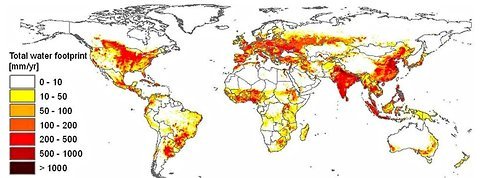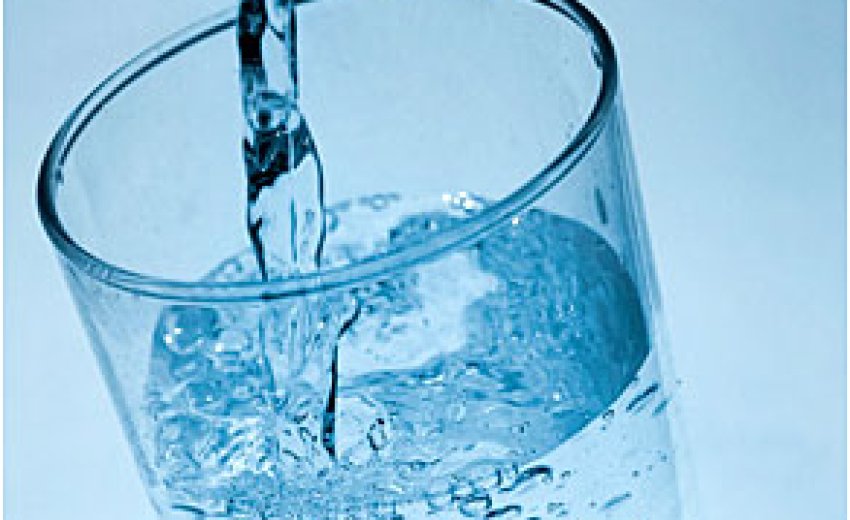 |
| Arjen Hoekstra and Mesfin Mekonnen/PNAS Humankind’s average annual water footprint from 1996 to 2005. |
With the world’s freshwater supplies under mounting pressure from pollution and galloping consumption, understanding the how, where and why of water use is more important than ever.
To that end, scientists from the University of Twente in the Netherlands have released a new study analyzing the quantity and distribution of global water use from 1996 to 2005.
The study, published in the Proceedings of the National Academies of Science, is the third major research effort to tackle the daunting question of global water consumption patterns, and it has improved on previous attempts by breaking down the different ways in which people use water. Those can broadly be thought of as the volume of rainwater consumed, the volume of ground and surface water depleted and the volume of water polluted.
Globally, agriculture accounts for 92 percent of all freshwater use, with the water-intensive production of cereal grains like wheat, rice and corn accounting for 27 percent of the world’s water footprint. Meat production is responsible for 22 percent and dairy for 7 percent, the study indicates.
It found that the United States, which has only 5 percent of the world’s population, is the third-largest consumer of freshwater, after the vastly more populated China and India. Per-capita water consumption in the United States was 2,842 cubic meters a year, or 100,364 cubic feet, in comparison with 1,089 cubic meters for China and 1,071 for India.
United States water consumption is also near the top when compared with figures for other industrialized nations. Britain has a per-capita water use rate of 1,258 cubic meters per year. The difference between the two countries arises in large part from the fact that Americans eat 4.5 times as much beef as the global average while the British eat only twice what is normal elsewhere. Beef, especially the grain-fed variety, is extremely water-intensive.
The researchers also examined the flow of “virtual water” between countries. Virtual water moves between countries when, for example, rice grown in Asia using Asian water is exported to Africa. About one-fifth of the water consumed globally is virtual water. Tracing the flow of virtual water highlights which countries rely heavily on foreign water supplies and to what extent these countries are helping to deplete and pollute water supplies beyond their borders.
The biggest net exporters of virtual water are North and South America, South Asia and Australia. The biggest net virtual water importers are North Africa, the Middle East, Mexico, Europe, Japan and South Korea.
On average, exported goods were found to consume and to pollute surface and groundwater more than domestically consumed goods do. Per capita, countries in Central and Southwest Asia and North Africa appear to have the most unsustainable water use patterns, based not on the volume consumed, but on their reliance on finite supplies of groundwater.
The researchers hope the study will help governments evaluate the various factors contributing to national water footprints and adjust unsustainable consumption practices and inefficiencies in production. Bolivia, for example, eats only 1.3 times the global average for meat, but this has a huge impact on its water footprint because each ton of meat consumed there requires five times as much water to produce as the global average.
 |
| Arjen Hoekstra and Mesfin Mekonnen/PNAS More than 22 percent of the water consumed worldwide is imported as virtual water, meaning that water is used elsewhere to produce an Imported commodity. Shades of green indicate water-exporting nations; lighter shades and slimmer arrows signify smaller volumes. Other colors highlight nations importing virtual water, with red nations importing the most. |
